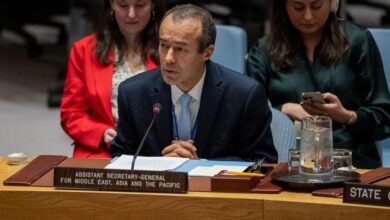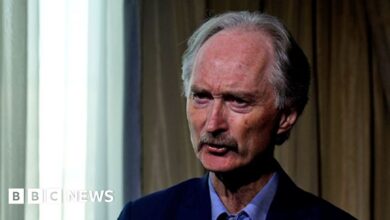More than 1.8 million people in Gaza face extreme hunger


data from IPC’s global food security initiative shows that 133,000 people – or 6% of the region’s population – have experienced Stage 5 or “catastrophic” food insecurity.
It is feared this number could rise to around 345,000 people – or 16% of the entire population – between November and April next year.
“The risk of famine persists throughout the Gaza Strip. With the recent increase in conflict, there are growing concerns that this worst-case scenario could become a reality.,” the review noted.
‘Unbearable’ situation
United Nations deputy spokesman Farhan Haq told reporters at a regular press conference Thursday in New York that the Secretary-General is concerned by the findings of the IPC report amid high displacement. and restrictions on humanitarian aid flows.
“A year after the conflict, famine appeared. This is unbearable”, Mr. Haq said.
He added that the Secretary-General also called on Israel to immediately reopen all crossing points.
In addition, bureaucratic obstacles must be removed and law and order must be restored inside Gaza so that United Nations agencies can provide life-saving humanitarian assistance, Haq stressed.
Key recommendations
The IPC assessment also emphasized that only through widespread access to sufficient food, medical supplies, water and basic services across the Gaza Strip can the risk of a rapid slide into famine be prevented. block.
It calls for an immediate, unconditional and sustainable ceasefire, the restoration of food systems, and the prevention and better management of acute and rising malnutrition.
Complementary feeding programs and other infant and young child feeding programs should be strengthened, including promotion of breastfeeding and care of infants who are not breastfed.
United Nations response
For their part, United Nations agencies continue their efforts to support all Gazans despite serious challenges, including insecurity, difficulty of access, evacuation orders and ongoing fighting. go out.
Food and Agriculture Organization of the United Nations (FAOfor example, has prioritized reactivating local food production and restoring supplies of highly nutritious foods, especially as winter approaches. Even before the war, winters in Gaza saw a spike in hunger and malnutrition.
“To limit acute hunger and malnutrition, we must act now – immediately end hostilities, restore humanitarian access to deliver vital food aid and essential as well as timely agricultural inputs for the upcoming winter growing season that started – allowing them to grow food,” speak Beth Bechdol, Deputy General Director of the agency.
“Humanitarian aid alone is not enough. People need fresh, nutritious food. To make a difference, we also need to support farmers to resume and restart food production, as well as the flow of food and non-food imports,” she added.
Significant damage to livestock
FAO also expressed “deep concern” about the significant loss of livestock, which are indispensable to the livelihoods and basic survival of Gaza’s people.
The agency has established a program to protect about 30,000 sheep and goats – about 40% of the remaining livestock. As of the end of September, they had distributed food to more than 4,400 herders in Rafah, Khan Younis and Deir al-Balah, as well as distributed veterinary kits to about 2,400 herder families.
FAO stands ready to provide more essential supplies, including additional animal feed, greenhouse plastic panels, plastic water tanks, vaccines, energy blocks and animal shelters, after the Access, security and mobility conditions are restored. speak.
“By raising these animals, it is possible to provide enough milk for all children in Gaza,” the organization added.
Water shortage in northern Gaza
The humanitarian crisis is being exacerbated by severe water shortages in northern Gaza. The United Nations on Thursday warned that tens of thousands of civilians were facing “grave danger” as Israel’s military operations continued.
Office for the Coordination of Humanitarian Affairs (OCHA) reports that ongoing hostilities are severely hindering access to essential resources, especially water.
“Intense hostilities, evacuation orders and loss of access to many water, sanitation and hygiene facilities in northern Gaza has caused some water production and wastewater collection systems to become inoperable,” United Nations deputy spokesman Haq said at a news conference in New York on Thursday.
In Jabalya and Beit Lahya, municipal well water production has completely stopped. Daily water distribution in northern Gaza has plummeted to just 638 cubic meters, compared with 380,000 cubic meters across Gaza before October 2023.
Mr. Haq also noted that United Nations partners are “preparing for winter and taking urgent steps to reduce the risk of flooding.”
Despite these challenges, humanitarian efforts continue. The second round of polio vaccination campaigns in central Gaza has reached more than 181,000 children and plans to expand to southern Gaza on Friday.




